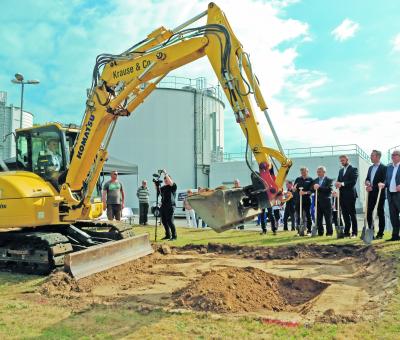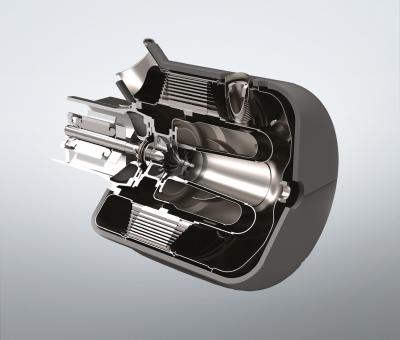At a treatment plant in Thuringia, two-phase digestion in conjunction with a VTA MicroTurbine has proven its worth.
In 2014, the people at WAVH, the Hildburghausen water and wastewater association, faced an important decision, as the Hildburghausen treatment plant reached the limits of its capacity. There were two conceivable possibilities for the future development of connections: construction of another, third activated sludge tank for aerobic sludge stabilisation or conversion to anaerobic stabilisation with digestion.
The decision was ultimately taken to build a new, optimised high-load digestion plant. The determining factors in this decision were cost increases that can be expected in the future for electricity and sludge disposal. Because despite higher investment costs, this plant technology is more attractive than an extension of aerobic stabilisation capacity, as it is less expensive to operate and produces a significant reduction in the amount of sewage sludge to be disposed of. It also offers the possibility of recovering some of the energy by utilising the digester gas with a MicroTurbine.
The well-established standard method of digestion, anaerobic sludge stabilisation, is based on a long retention time for the sludge fed into the digester, usually 20 to 25 days. This means that large reactor volumes are required. This system also requires permanent circulation of the contents of the reactor, which consumes a lot of energy.
Reactor chamber can be smaller By contrast, new technologies such as high-load digestion, which are already in use in some places in Germany, can manage with a very small reactor chamber and are far less expensive to build than the standard process. But without energy-intensive circulation, this is also not possible, and there is a further disadvantage: the resulting short-circuiting causes fresh substrate slippage, which means that some of the fresh sludge supplied cannot be stabilised and leaves the digester immediately as a result of mixing via the sequential sludge discharge.
To avoid this, Hildburghausen also relies on two-phase separation of the supplied sludge in the digestion reactor by gravity. As a result, a low viscosity phase containing ultra-fine particles and a sedimentary phase are formed in the reactor chamber. This encourages concentration of the active bacterial mass; energy is required only to incorporate the fresh sludge mass into the sedimentary fraction. This makes permanent circulation of the entire reactor contents unnecessary and prevents fresh sludge slippage. This approach to digestion is based on experience with biogas technology in the agricultural sector.
Successful alternative
In terms of building, the plant consists of a pre-thickener, a relatively tall and slim digester and a machine hall between them. The two tanks consist of stainless steel cylinders including a funnel tip with insulation applied subsequently. Gas utilisation is by means of a CR50 MicroTurbine from VTA, which is located in the funnel area of the tanks and in the machine hall.
The two-phase digestion process has now been implemented as an alternative to an additional activated sludge stage at the Hildburghausen treatment plant and has been in operation since April 2017. After a successful running-in and optimisation phase, the MicroTurbine will cover at least 40% of total power consumption and 100% of the heat requirement of the treatment plant annually. At the same time, the process reduces the volume of sewage sludge requiring disposal by at least 30%.
Field report from the VTA Group’s scientific journal “Laubfrosch”, issue 72
Graduate engineer Jens Saborowski
Arequa GmbH
‘The MicroTurbine will cover at least 40% of total power consumption and 100% of the heat requirement of the treatment plant.’
Request
Would you like more information about our products?
Contact our experts and together we will find the right solution.





